Easy Kai Jeow Thai Omelette Recipe (ไข่เจียว) is a quick and easy dish that can be found everywhere in Thailand. It's a popular breakfast but can also be enjoyed as a snack or a side dish for lunch or dinner. It's one of the easiest Thai dishes and can be whipped up in less than 15 minutes!

Thai omelet is a comfort food that can be enjoyed any time of the day. It is a popular street food in Thailand, often served with rice and garnishes. It's an easy meal yet a delicious recipe popular as a quick breakfast, especially with Thai kids! (My childhood breakfast!)
Prik Nam Pla, an easy Thai fish sauce recipe, is a must for this simple omelet. Nam Prik Pla and omelet are the perfect pair and are often served side by side.
Prik Nam Pla is also a quick recipe to put together, and it's sure to elevate the flavors of your omelet. Check out another Thai crispy fried egg salad and Thai pork omelette with this recipe.
Jump to:
- Why you'll love Thai Khai Jiaw
- What is the difference between Kai Dao and Kai Jeow
- Ingredients for making Khai Jiow
- How to make a Thai omelet
- Garnishing options for Thai Kai Jaeow
- Helpful kitchen notes and tips
- Helpful kitchen tools for this recipe
- Variations
- Substitute
- Storage Tips
- Frequently Asked Questions
- More Thai recipes you'll love
- Related Recipes
- Cocktails/Drinks
- Kai Jeow Thai Omelet Recipe (ไข่เจียว)
Why you'll love Thai Khai Jiaw
- It's easy to make! This Thai omelet is a simple dish that can be made in minutes. You only need eggs, fish sauce, water, and some oil to fry it.
- It's a versatile dish. This Thai style omelet can be eaten for breakfast, lunch, or dinner. It can be served as a main or side dish to complement other Thai dishes.
- It's flavorful. Kai Jaoew has a unique flavor from the combination of fish sauce whisked with eggs and then fried in hot oil. It's crispy on the outside and fluffy on the inside, making it a perfect texture combination.
- Extra protein. Eggs are a great source of protein, and a Thai omelet is a great way to incorporate more protein into your diet. It's also gluten-free and can be made vegetarian by omitting the fish sauce.
- It's a comfort food. Thai omelet is a popular comfort food in Thailand, and it's easy to see why. It's a simple yet satisfying dish that will leave you feeling full and content.
If you haven't tried Thai omelets yet, you're missing out! Give it a try, and you'll see why it's such a beloved dish by Thai people.
What is the difference between Kai Dao and Kai Jeow
Kai Dao and Kai Jeow are popular Thai dishes with eggs as the main ingredients. The main difference between the two dishes is how the egg is prepared.
Kai Dao, also known as Thai-style fried eggs, are fried in hot oil until the whites are crispy and the yolk is still runny. Thai Kai Dao is usually served with rice and a side of sauce, such as a sweet chili or fish sauce.
Thai Kai Jeow, on the other hand, is a Thai-style omelet. The eggs are whisked together with fish sauce, ground meat, vegetables, and sometimes a pinch of sugar. The mixture is then fried in a hot pan until the edges are crispy and the center is fluffy.
Kai Dao and Kai Jeow are popular street food dishes in Thailand and can be found at many food stalls and markets. They are simple yet delicious dishes that showcase the versatility of eggs in Thai cuisine.
Ingredients for making Khai Jiow
To make a simple Thai omelet, you'll need these simple ingredients

- Eggs. Use chicken or duck eggs for this recipe. Duck eggs have a gamey and rich flavor. Duck eggs are popular in Thailand but not so much in the West.
- Fish sauce. The only seasoning sauce for this Thai omelet. Soy sauce or oyster sauce could work, but the flavors will differ.
- Water. Adding water to the beaten eggs makes for an extra puffy Thai omelette. Skip the water and use just eggs if preferred.
- Oil. This recipe will need lots of oil to make a Thai-style omelet. Use any high smoke point oil like avocado or coconut canola oil. Olive or sesame oil is not recommended for this recipe.
How to make a Thai omelet
Step 1. Beat the raw eggs in a small bowl until they're well mixed.
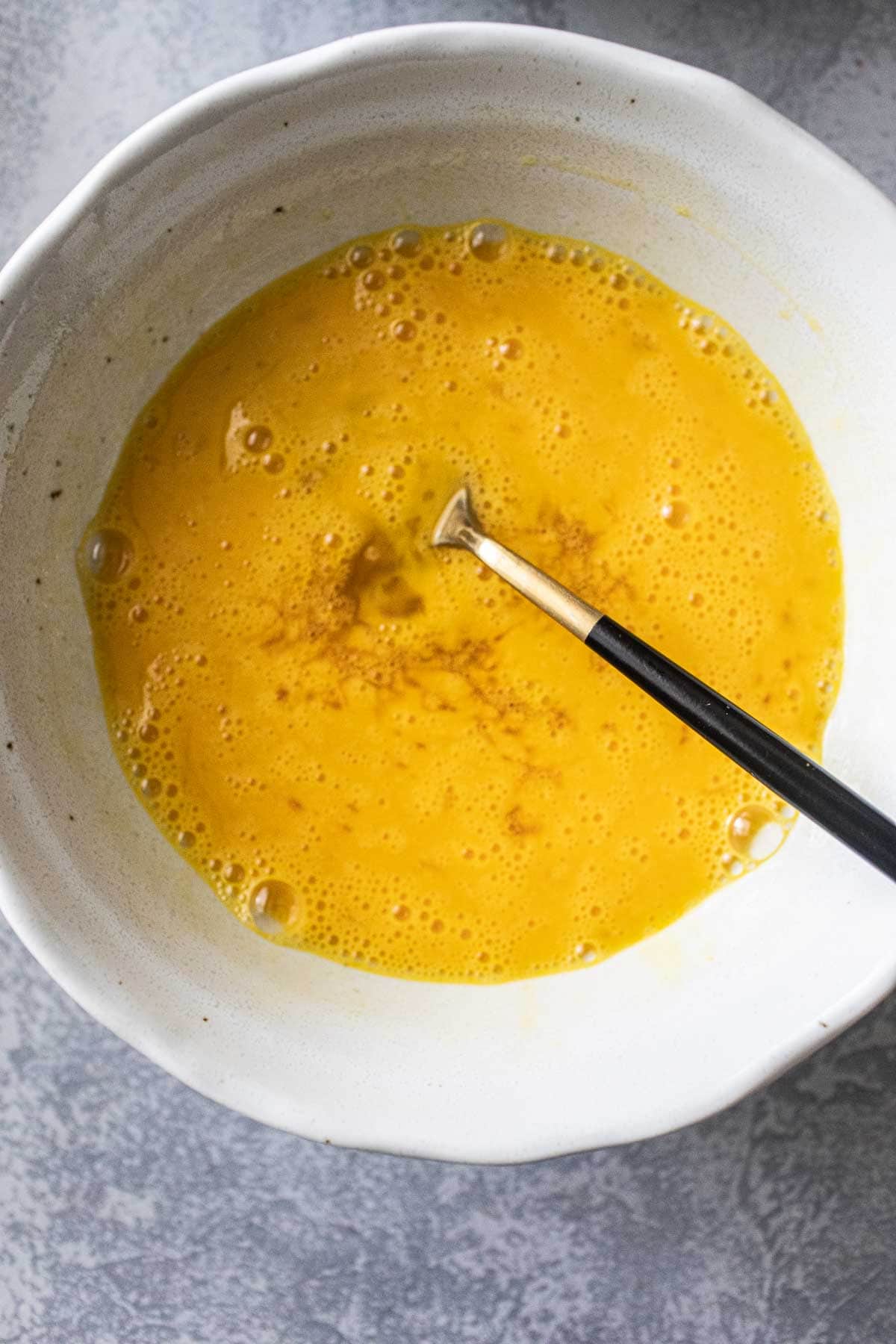
Step 2. Add the fish sauce and water to the bowl and whisk until everything is well combined.

Step 3. Heat the oil in a frying pan over medium-high heat. Have a plate lined with paper towels ready on the side to absorb excess oil from the cooked omelet.
Step 4. Pour the egg mixture into the hot skillet or pan and let it cook for about 2-3 minutes until the bottom is golden brown and the edges of the omelet are crispy.
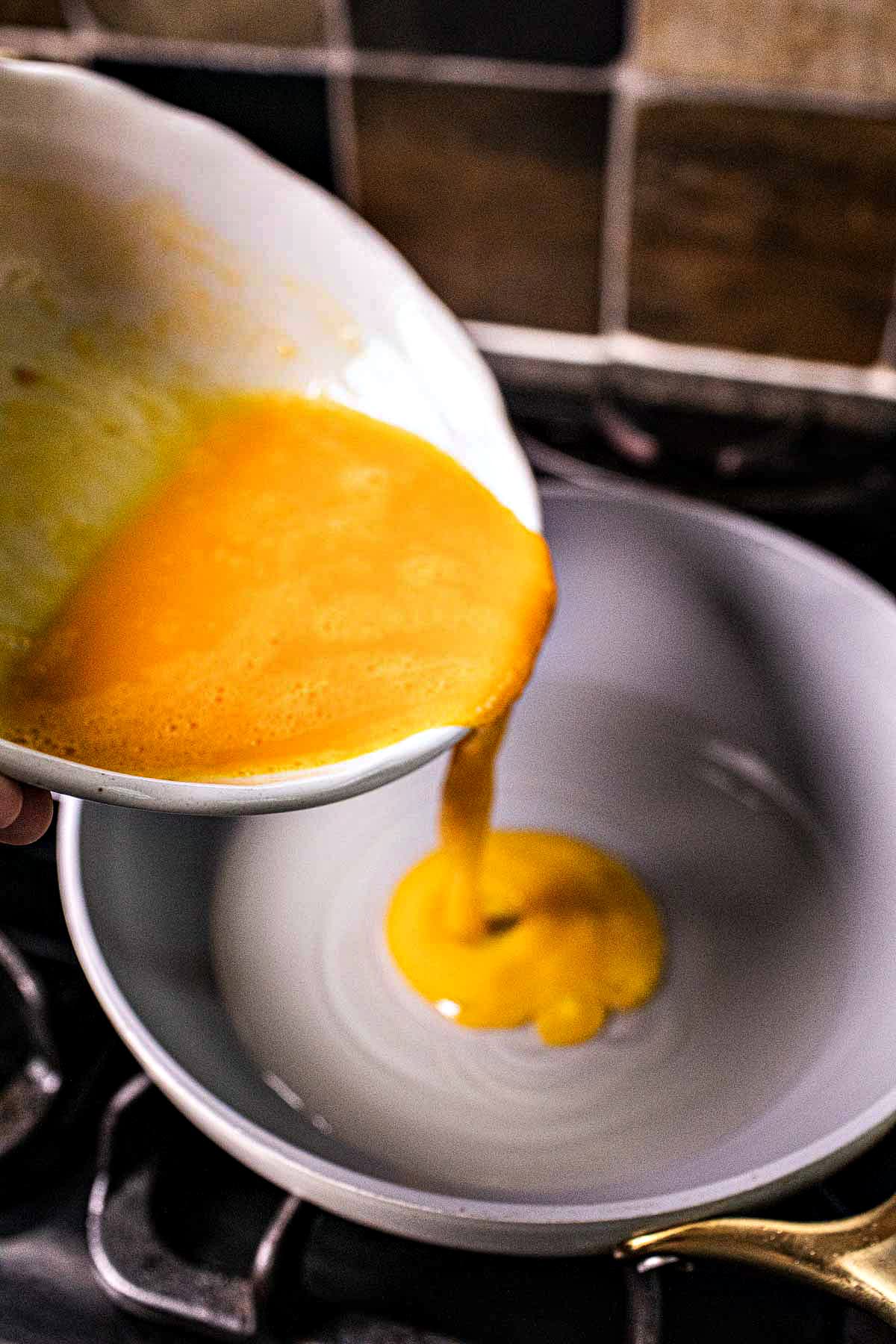
Step 5. Use a spatula to fold the omelet in half, then cook for a couple of minutes or until the inside is fully cooked.
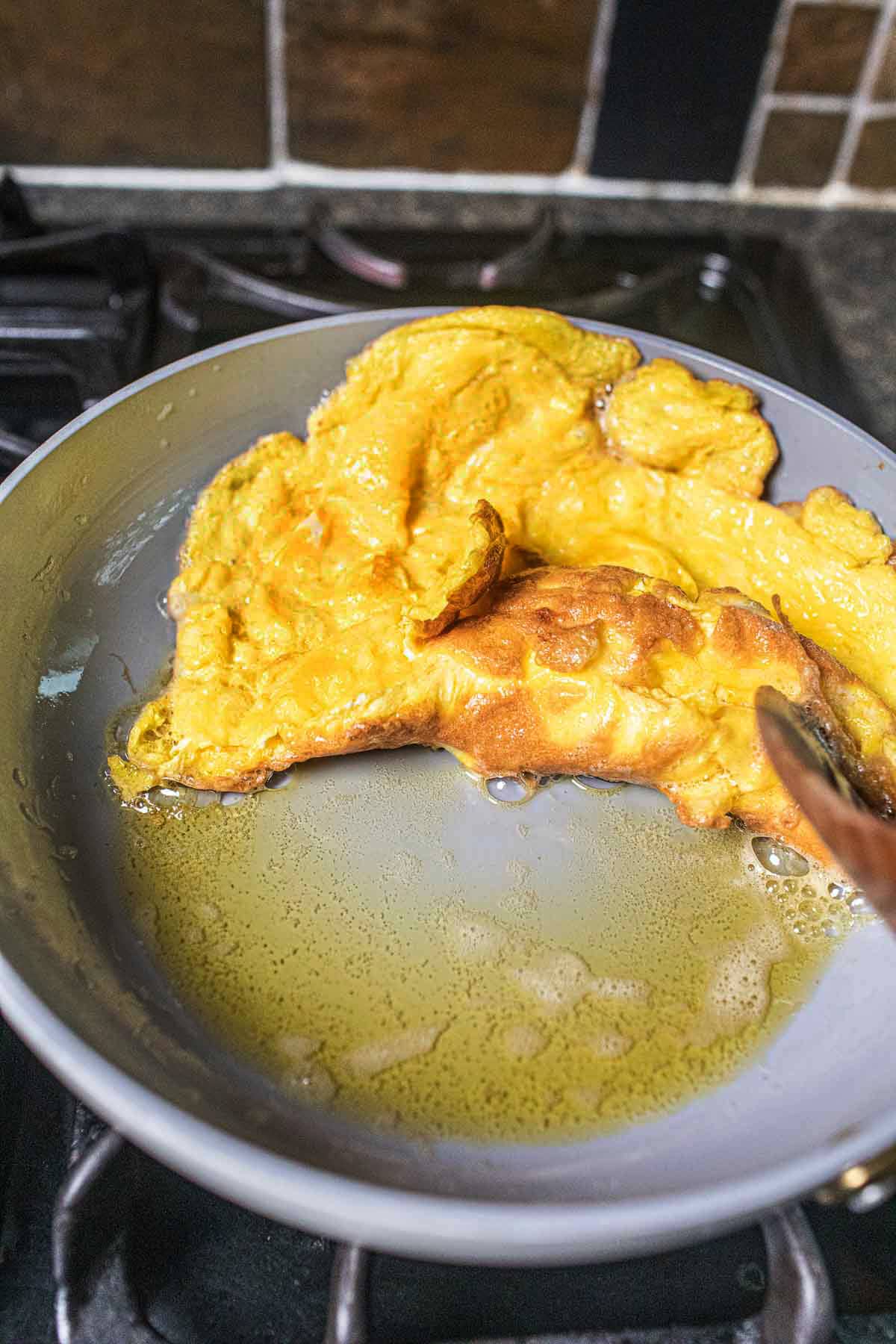
Step 6. Remove the omelet to a paper towel-lined plate to soak up the extra oil. Placed the eggs over a plate of rice. Jasmine rice is amazing with this omelet! Serve with a hot sauce like Nam Prik Pla on the side!
Enjoy your delicious Thai omelet!

Garnishing options for Thai Kai Jaeow
Here are some garnishing options for your Thai omelet. Try experimenting with different garnishes to find your favorite combination!
- Thai chili sauce: Serve your omelet with a sweet and spicy Thai chili sauce for an authentic taste. Try this homemade Thai sweet chili sauce and Nam Prik Pla.
- Sprinkle some white pepper powder over the rice for added flavor.
- Fresh herbs. Add a sprinkle of fresh cilantro, Thai basil, or green onions to your omelet for a burst of flavor. Learn about the different Thai herbs here.
- Lime wedges. Squeeze fresh lime or lemon juice over your omelet for a tangy kick.
- Sriracha sauce. Drizzle some spicy Thai Sriracha sauce on your omelet for an extra kick of heat. Read more about different Thai sauces here.
- Tomato slices and cucumber salad. Serve your omelet with refreshing tomato slices and cucumber salad.
Helpful kitchen notes and tips
- Use enough oil to make this recipe. Thai omelet is almost like a deep-fried dish. The amount used may seem like too much oil, but it's how the recipe is made in Thai cuisine. The oil helps create crispy edges of the fried eggs.
- Use fish sauce: Instead of salt, use fish sauce to season the eggs. This will add a great depth of flavor to the omelet.
- Use a nonstick pan: A non-stick pan will make it easier to flip the omelet and prevent it from sticking to the pan.
- Whisk the eggs thoroughly: Whisk them until they are frothy and light. This will help the omelet to be fluffy and tender.
- Fry until crispy: Fry the omelet until it is crispy and golden brown. This will give it a nice texture and flavor.
- Serve with chili sauce: Thai omelets are often served with a sweet and spicy chili sauce. You can make your own or use store-bought.
Helpful kitchen tools for this recipe
- Use a round-bottomed wok that holds the oil like a small pot for a deep frying pan.
- A good spatula. Use a thin-edged metal or wooden spatula-Helps when turning the eggs without breaking the omelet.
- A nonstick skillet works well, too, for the Kai Jaoew recipe
- A medium mixing bowl for whisking the eggs in.
Variations
- There's another version of this Thai omelet called Kai Jeow Moo Sap, using minced pork to mix in with the omelet and then fry with oil.
- That version also uses more ingredients like crab meat, shrimp, or vegetables. But for this recipe, only eggs are used, and the flavors are simple.
Substitute
- Use duck or turkey eggs instead of chicken eggs. Duck eggs are popular in Thailand and are almost used exclusively instead of chicken eggs.
Storage Tips
- For leftover eggs, place the omelet in an airtight container. Store the container in the refrigerator. Thai omelets can be stored in the fridge for 3-4 days.
- When you're ready to eat your Kai Jiaw, you can reheat it in the microwave for 30-60 seconds. Alternatively, you can heat it in a pan on the stove until it's warmed.

Frequently Asked Questions
Thai omelet, also known as "khai jiao" in Thai, differs from the traditional Western omelets in a few ways. Thai omelet is typically made with fish sauce, which gives it a unique salty flavor and a light brown color. Western omelets usually do not include fish sauce.
The cooking method is also different. Thai omelet is often cooked in a wok or a frying pan with a generous amount of oil, resulting in a crispy and fluffy texture. Western omelets are usually cooked with less oil, resulting in a flatter and dense texture.
Thai omelets, known as ไข่เจียว, can be spelled in different ways in English. Some variations include Khai Jaew, Kai Jiew, Kai Jiew, or Khao Jiow.
Despite the different spellings, they all refer to the same dish - the Thai omelet.
Fried egg in Thai is called "Kai Dao." It is a simple and popular dish in Thailand and can be served as a side dish for any meal. The egg is usually fried until the edges turn crispy while the yolk remains runny.
It is often seasoned with soy sauce, white pepper, and sometimes, oyster sauce. Kai Dao is commonly served with rice, a popular breakfast dish in Thailand.
More Thai recipes you'll love
- Nam Prik Pla
- Thai crispy fried egg salad
- Thai sweet chili dipping sauce
- Nam Jim Jaoew
- Laab Gai, Thai ground chicken salad
- Shrimp fried rice
- Spices in Thai cooking
Related Recipes
Looking for other recipes like this? Try these:
Cocktails/Drinks
These are my favorite drinks and cocktails to serve with Thai fried eggs.
**Love a recipe you've tried? Please leave a 5-star rating in the recipe card below and a review in the comments section further down the page. Or follow me on Facebook, Pinterest, or Instagram!**
Print
Kai Jeow Thai Omelet Recipe (ไข่เจียว)
- Total Time: 15 minutes
- Yield: 4
- Diet: Gluten Free
Description
Kai Jeow Thai Omelet Recipe (ไข่เจียว) is a quick and easy dish that can be found everywhere in Thailand. It's a popular breakfast but can also be enjoyed as a snack or a side dish for lunch or dinner. It's one of the easiest Thai dishes and can be whipped up in less than 15 minutes!
Ingredients
- 4 eggs
- 2 teaspoons fish sauce
- 1 tablespoon water
- ¼ cup vegetable oil
Instructions
- Beat the raw eggs in a small bowl until they're well mixed.
- Add the fish sauce and water to the bowl and whisk until everything is well combined.
- Heat the oil in a frying pan over medium-high heat. Have a plate lined with paper towels ready on the side to absorb excess oil from the cooked omelet.
- Pour the egg mixture into the hot skillet or pan and let it cook for about 2-3 minutes until the bottom is golden brown and the edges of the omelet are crispy.
- Use a spatula to fold the omelet in half, then cook for a couple of minutes or until the inside is fully cooked.
- Remove the omelet to a paper towel-lined plate to soak up the extra oil. Placed the eggs over a plate of rice. Jasmine rice is amazing with this omelet! Serve with a hot sauce like Nam Prik Pla on the side! Enjoy your delicious Thai omelet!
Notes
- Use enough oil to make this recipe. Thai omelet is almost like a deep-fried dish. The amount used may seem like too much oil, but it's how the recipe's made in Thai cuisine. The oil helps creates crispy edges of the fried eggs.
- Use fish sauce: Instead of salt, use fish sauce to season the eggs. This will add a great depth of flavor to the omelet.
- Use a nonstick pan: A non-stick pan will make it easier to flip the omelet and prevent it from sticking to the pan.
- Whisk the eggs thoroughly: Whisk them until they are frothy and light. This will help the omelet to be fluffy and tender.
- Fry until crispy: Fry the omelet until it is crispy and golden brown. This will give it a nice texture and flavor.
- Serve with chili sauce: Thai omelets are often served with a sweet and spicy chili sauce. You can make your own or use store-bought.
** Thank you so much for visiting my blog! This is truly a passion for me. If you have enjoyed these recipes and appreciate the hard work I put into them, I would love it if you would share them with your friends! Your recommendation is the highest review I could hope for, and I’d appreciate it! **
- Prep Time: 5
- Cook Time: 10
- Category: easy recipes
- Method: pan fried
- Cuisine: Thai



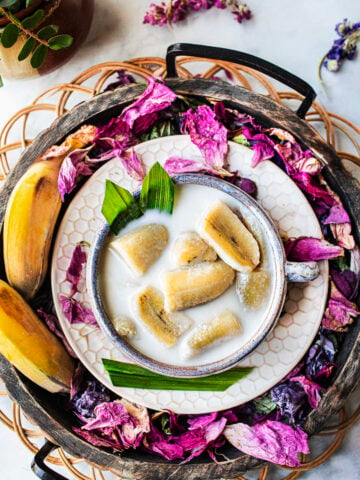







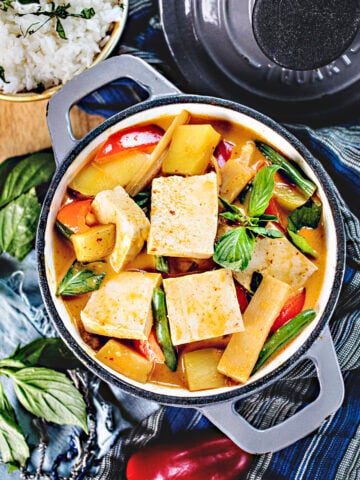

Doris says
Thank you! This was so easy and tasty to make. Perfect for a school breakfast. 😍
Morgan says
An amazing and simple recipe. The kids loved it over jasmine rice! It seems so simple yet the big flavors surprised us all. Thank you so much.
Patricia says
The best breakfast for the weekend! So glad the family decided to go with this recipe! We also tried Thai sriracha per your recommendation and I’m not sure we can go back to the original sriracha now. 😄